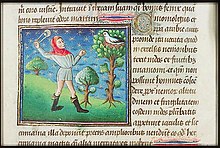
A bestiary is a compendium of beasts. Originating in the ancient world, bestiaries were made popular in the Middle Ages in illustrated volumes that described various animals and even rocks. The natural history and illustration of each beast was usually accompanied by a moral lesson. This reflected the belief that the world itself was the Word of God and that every living thing had its own special meaning. For example, the pelican, which was believed to tear open its breast to bring its young to life with its own blood, was a living representation of Jesus. Thus the bestiary is also a reference to the symbolic language of animals in Western Christian art and literature.
Claudius Aelianus, commonly Aelian, born at Praeneste, was a Roman author and teacher of rhetoric who flourished under Septimius Severus and probably outlived Elagabalus, who died in 222. He spoke Greek so fluently that he was called "honey-tongued" ; Roman-born, he preferred Greek authors, and wrote in a slightly archaizing Greek himself.

In Greek mythology, sirens are humanlike beings with alluring voices; they appear in a scene in the Odyssey in which Odysseus saves his crew's lives. Roman poets place them on some small islands called Sirenum scopuli. In some later, rationalized traditions, the literal geography of the "flowery" island of Anthemoessa, or Anthemusa, is fixed: sometimes on Cape Pelorum and at others in the islands known as the Sirenuse, near Paestum, or in Capreae. All such locations were surrounded by cliffs and rocks.
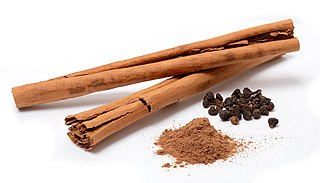
Cinnamon is a spice obtained from the inner bark of several tree species from the genus Cinnamomum. Cinnamon is used mainly as an aromatic condiment and flavouring additive in a wide variety of cuisines, sweet and savoury dishes, breakfast cereals, snack foods, bagels, teas, hot chocolate and traditional foods. The aroma and flavour of cinnamon derive from its essential oil and principal component, cinnamaldehyde, as well as numerous other constituents including eugenol.
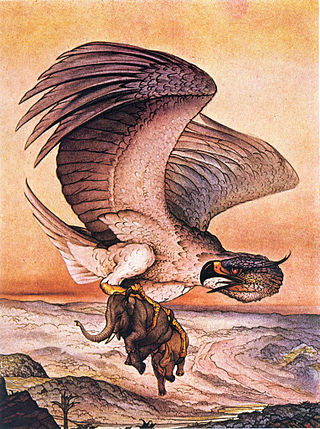
The roc is an enormous legendary bird of prey in the popular mythology of the Middle East.

Conrad Gessner was a Swiss physician, naturalist, bibliographer, and philologist. Born into a poor family in Zürich, Switzerland, his father and teachers quickly realised his talents and supported him through university, where he studied classical languages, theology and medicine. He became Zürich's city physician, but was able to spend much of his time on collecting, research and writing. Gessner compiled monumental works on bibliography and zoology and was working on a major botanical text at the time of his death from plague at the age of 49. He is regarded as the father of modern scientific bibliography, zoology and botany. He was frequently the first to describe species of plants or animals in Europe, such as the tulip in 1559. A number of plants and animals have been named after him.

The great chain of being is a hierarchical structure of all matter and life, thought by medieval Christianity to have been decreed by God. The chain begins with God and descends through angels, humans, animals and plants to minerals.

The northern bald ibis, hermit ibis, or waldrapp is a migratory bird found in barren, semi-desert or rocky habitats, often close to running water. This 70–80 cm (28–31 in) glossy black ibis, which, unlike many members of the ibis family, is non-wading, has an unfeathered red face and head, and a long, curved red bill. It breeds colonially on coastal or mountain cliff ledges, where it typically lays two to three eggs in a stick nest, and feeds on lizards, insects, and other small animals.
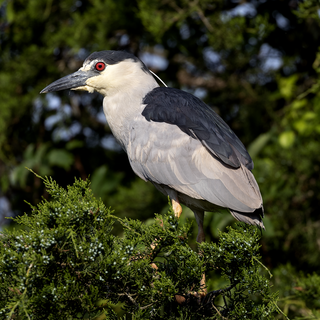
The black-crowned night-heron, or black-capped night-heron, commonly shortened to just night-heron in Eurasia, is a medium-sized heron found throughout a large part of the world, including parts of Europe, Asia, and North and South America. In Australasia it is replaced by the closely related nankeen night-heron, with which it has hybridized in the area of contact.
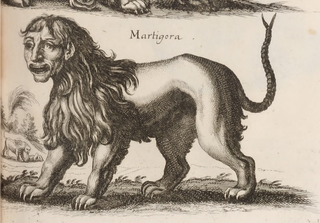
The manticore or mantichore is a Persian legendary creature similar to the Egyptian sphinx that proliferated in western European medieval art as well. It has the head of a human, the body of a lion and a tail of venomous spines similar to porcupine quills, while other depictions have it with the tail of a scorpion. There are some accounts that the spines can be launched like arrows.

Bennu is an ancient Egyptian deity linked with the Sun, creation, and rebirth. He may have been the original inspiration for the phoenix legends that developed in Greek mythology.

History of Animals is one of the major texts on biology by the ancient Greek philosopher Aristotle, who had studied at Plato's Academy in Athens. It was written in the fourth century BC; Aristotle died in 322 BC.

The great tinamou is a species of tinamou ground bird native to Central and South America. There are several subspecies, mostly differentiated by their coloration.
The salamander is an amphibian of the order Urodela which, as with many real creatures, often has been ascribed fantastic and sometimes occult qualities by pre-modern authors not possessed by the real organism. The legendary salamander is often depicted as a typical salamander in shape with a lizard-like form, but is usually ascribed an affinity with fire, sometimes specifically elemental fire.
This is a chronologically organized listing of notable zoological events and discoveries.
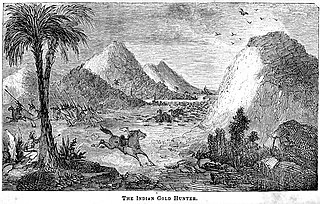
The gold-digging ant is a mythical insect described in classical and medieval bestiaries. They were dog- or fox-sized ants that dug up gold in sandy areas. Some versions of the Physiologus said they came from Ethiopia, while Herodotus claimed they were located in India.

Historia animalium, published in Zurich in 1551–1558 and 1587, is an encyclopedic "inventory of renaissance zoology" by Conrad Gessner (1516–1565). Gessner was a medical doctor and professor at the Carolinum in Zürich, the precursor of the University of Zurich. The Historia animalium, after Aristotle's work of the same name, is the first modern zoological work that attempts to describe all the animals known, and the first bibliography of natural history writings. The five volumes of natural history of animals cover more than 4500 pages.

The Eurasian wren or northern wren is a very small insectivorous bird, and the only member of the wren family Troglodytidae found in Eurasia and Africa (Maghreb). In Anglophone Europe, it is commonly known simply as the wren. It has a very short tail which is often held erect, a short neck and a relatively long thin bill. It is russet brown above, paler buff-brown below and has a cream buff supercilium. The sexes are alike.

The Rochester Bestiary is a richly illuminated manuscript copy of a medieval bestiary, a book describing the appearance and habits of a large number of familiar and exotic animals, both real and legendary. The animals' characteristics are frequently allegorised, with the addition of a Christian moral.
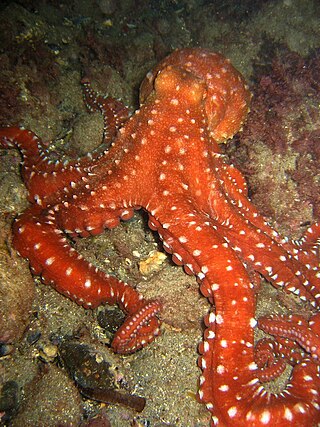
Aristotle's biology is the theory of biology, grounded in systematic observation and collection of data, mainly zoological, embodied in Aristotle's books on the science. Many of his observations were made during his stay on the island of Lesbos, including especially his descriptions of the marine biology of the Pyrrha lagoon, now the Gulf of Kalloni. His theory is based on his concept of form, which derives from but is markedly unlike Plato's theory of Forms.
